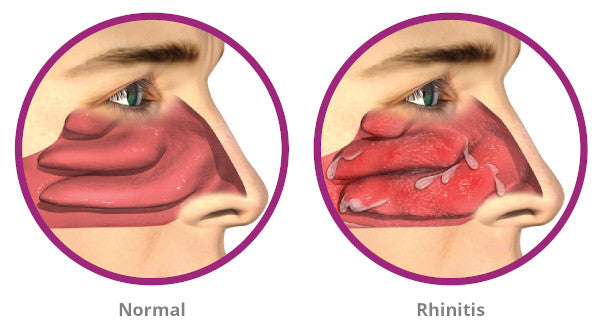Nursing Paper Example on Necrotizing Fasciitis [SOLVED]
/in Assignment Help, Assignment Help Nursing, BLOG, Homework Help, Nursing Exam Help, Nursing Paper Help, Psychology assignment help, Solved Nursing Essays /by Aimee GraceNursing Paper Example on Necrotizing Fasciitis [SOLVED]
Necrotizing Fasciitis (NF) presents a formidable challenge in the realm of infectious diseases, characterized by its rapid and destructive nature. Often referred to as the “flesh-eating disease,” NF instills fear due to its ability to swiftly ravage soft tissue and pose significant morbidity and mortality risks. This paper serves as a beacon of knowledge, illuminating the intricate facets of NF, from its insidious causes to its dire consequences. As we embark on this exploration, we delve into the labyrinth of NF’s pathogenesis, unraveling the complex interplay between bacterial pathogens and host defenses. By dissecting its clinical manifestations and diagnostic criteria, we strive to empower healthcare providers with the tools necessary for early recognition and intervention. Through a multifaceted approach encompassing both medical and surgical management strategies, we endeavor to mitigate the impact of NF and safeguard the well-being of those affected by this relentless adversary. (Nursing Paper Example on Necrotizing Fasciitis [SOLVED])
Causes
Necrotizing Fasciitis (NF) arises from a consortium of bacterial pathogens, with group A Streptococcus (GAS) and Staphylococcus aureus being predominant culprits. These bacteria possess virulent traits that enable them to invade and rapidly proliferate within the subcutaneous tissues, precipitating the cascade of tissue destruction characteristic of NF.
Numerous predisposing factors can predispose individuals to NF, including immunocompromised states such as diabetes mellitus, chronic renal failure, or HIV infection. Additionally, conditions compromising the skin’s integrity, such as dermatologic conditions or recent trauma/surgery, create portals of entry for bacterial invasion.
Traumatic wounds, including lacerations, abrasions, or puncture injuries, serve as common entry points for NF-causing pathogens. Surgical incisions, particularly in contaminated or poorly perfused areas, can also become sites of infection. Intravenous drug use represents another risk factor, as repeated needle injections can introduce bacteria into the bloodstream, facilitating their dissemination to distant tissues.
Microbial synergy plays a crucial role in the pathogenesis of NF, with polymicrobial infections often contributing to its development. Bacterial toxins and enzymes produced by these pathogens synergistically potentiate tissue destruction, leading to the characteristic clinical features of NF.
Environmental factors may also influence the incidence of NF, with warmer climates and aquatic environments favoring the growth of certain bacteria implicated in NF, such as Vibrio species.
NF is a multifactorial disease process precipitated by the interplay of virulent bacterial pathogens, host predisposing factors, and environmental influences. Understanding these underlying causes is paramount for implementing preventive measures and prompt management strategies to mitigate the devastating consequences of NF. (Nursing Paper Example on Necrotizing Fasciitis [SOLVED])
Signs and Symptoms
The clinical presentation of Necrotizing Fasciitis (NF) is characterized by a constellation of signs and symptoms that reflect the profound tissue destruction and systemic inflammation associated with the disease. Central to its diagnosis is the presence of severe pain that is often disproportionate to the physical findings, serving as a red flag for clinicians to suspect NF.
Visible changes in the skin and soft tissues are hallmark features of NF, including erythema, edema, and swelling over the affected area. These cutaneous manifestations may rapidly progress to necrosis, with the development of dusky discoloration and bullae formation. The affected skin often exhibits tense, shiny, and warm characteristics due to underlying inflammation and tissue edema.
Patients with NF may experience systemic symptoms indicative of severe infection and sepsis, including fever, tachycardia, and hypotension. These systemic manifestations reflect the host’s systemic inflammatory response to the bacterial toxins and cytokines released during the infectious process.
In advanced cases, the presence of gas within the soft tissues may result in subcutaneous crepitus, palpable as a crackling sensation upon palpation. This clinical finding, known as “gas gangrene,” is highly suggestive of NF and mandates urgent intervention.
Furthermore, anesthesia or hypoesthesia over the affected area may occur due to nerve involvement or tissue ischemia secondary to vascular compromise. This loss of sensation, coupled with the intense pain experienced by patients, underscores the severity of NF and underscores the urgency of prompt medical evaluation and intervention.
The signs and symptoms of NF encompass a spectrum of clinical manifestations ranging from localized tissue changes to systemic inflammatory responses. Timely recognition and intervention are essential to prevent disease progression and mitigate the devastating consequences of NF. (Nursing Paper Example on Necrotizing Fasciitis [SOLVED])
Etiology
The etiology of Necrotizing Fasciitis (NF) is multifactorial, involving a complex interplay between bacterial pathogens, host factors, and environmental influences. Central to its development are the virulent characteristics of the implicated bacterial species, primarily group A Streptococcus (GAS) and Staphylococcus aureus.
These bacteria possess an arsenal of virulence factors, including exotoxins, enzymes, and surface adhesins, which enable them to adhere to and invade host tissues. Once within the host, these pathogens proliferate rapidly, producing toxins that mediate tissue destruction and evade host immune defenses.
![Nursing Paper Example on Necrotizing Fasciitis [SOLVED]](https://www.kenhub.com/thumbor/wnYhd_18z8oGaByV3WScwJ1dXNE=/fit-in/800x1600/filters:watermark(/images/logo_url.png,-10,-10,0):background_color(FFFFFF):format(jpeg)/images/article/clinical-case-necrotising-fasciitis-of-the-anterior-abdominal-wall/39VXCIiT9KP6iqdHHJekHg_Necrotizing_Fasciitis_of_the_Anterior_Abdominal_Wall.png)
Host factors play a critical role in predisposing individuals to NF, with immunocompromised states such as diabetes mellitus, chronic renal failure, or HIV infection increasing susceptibility to infection. Additionally, conditions compromising the integrity of the skin barrier, such as dermatologic conditions or recent trauma/surgery, create portals of entry for bacterial invasion.
Traumatic wounds serve as common entry points for NF-causing pathogens, providing a foothold for bacterial colonization and subsequent tissue invasion. Surgical incisions, particularly in contaminated or poorly perfused areas, can also become sites of infection, especially in the presence of predisposing factors such as diabetes or peripheral vascular disease.
Microbial synergy contributes to the pathogenesis of NF, with polymicrobial infections often observed in affected individuals. The synergistic action of multiple bacterial species potentiates tissue destruction and inflammation, accelerating disease progression.
Environmental factors may also influence the incidence of NF, with warmer climates and aquatic environments favoring the growth of certain bacteria implicated in NF, such as Vibrio species.
The etiology of NF is multifaceted, involving a complex interplay between bacterial virulence factors, host predisposing factors, and environmental influences. Understanding these underlying mechanisms is essential for implementing preventive measures and targeted interventions to mitigate the impact of NF. (Nursing Paper Example on Necrotizing Fasciitis [SOLVED])
Pathophysiology
The pathophysiology of Necrotizing Fasciitis (NF) revolves around a cascade of events triggered by bacterial invasion and subsequent host immune responses. Upon entry into the host, virulent bacterial pathogens such as group A Streptococcus (GAS) and Staphylococcus aureus proliferate rapidly within the subcutaneous tissues, releasing an array of toxins and enzymes.
These bacterial toxins, including streptococcal pyrogenic exotoxins and staphylococcal exotoxins, initiate an inflammatory response characterized by the release of cytokines and chemokines. This inflammatory milieu attracts immune cells to the site of infection, leading to the recruitment of neutrophils and macrophages in an attempt to eradicate the invading pathogens.
Simultaneously, bacterial enzymes such as hyaluronidase, collagenase, and proteases facilitate tissue destruction by breaking down extracellular matrix components, including collagen and elastin. This enzymatic degradation compromises tissue integrity and disrupts normal tissue architecture, contributing to the rapid spread of infection along fascial planes.
Microvascular thrombosis, induced by bacterial toxins and host inflammatory mediators, further exacerbates tissue ischemia and necrosis. Occlusion of small blood vessels impairs tissue perfusion, leading to hypoxia and subsequent tissue death.
The formation of gas within the soft tissues, known as “gas gangrene,” is a hallmark feature of advanced NF cases. Gas production results from bacterial fermentation of tissue substrates and is facilitated by the presence of anaerobic conditions within the necrotic tissue.
The combination of bacterial toxins, enzymatic degradation, microvascular thrombosis, and tissue ischemia culminates in the characteristic clinical manifestations of NF, including rapidly spreading erythema, edema, and tissue necrosis. Timely recognition of these pathophysiological processes is essential for initiating prompt intervention and preventing further tissue damage and systemic complications associated with NF. (Nursing Paper Example on Necrotizing Fasciitis [SOLVED])
DSM-5 Diagnosis
The diagnosis of Necrotizing Fasciitis (NF) relies on a combination of clinical findings, laboratory tests, and imaging studies to confirm the presence of the infection and guide appropriate management strategies. While there is no specific diagnostic criteria outlined in the Diagnostic and Statistical Manual of Mental Disorders, Fifth Edition (DSM-5) for NF, healthcare providers utilize a comprehensive approach to establish the diagnosis.
Clinical evaluation begins with a thorough history and physical examination, focusing on identifying risk factors, assessing the progression of symptoms, and identifying characteristic signs of NF. The presence of severe pain disproportionate to physical findings, rapidly spreading erythema, edema, and tissue necrosis are key clinical features suggestive of NF.
Laboratory investigations play a vital role in supporting the diagnosis of NF, with complete blood count (CBC), inflammatory markers such as C-reactive protein (CRP) and erythrocyte sedimentation rate (ESR), and blood cultures aiding in the assessment of systemic inflammation and identification of causative pathogens.
Imaging studies, including computed tomography (CT) and magnetic resonance imaging (MRI), are valuable adjuncts in the diagnosis of NF, providing detailed visualization of soft tissue involvement, extent of necrosis, and presence of gas within the affected tissues. Findings such as thickening of fascial planes, fluid collections, and gas tracking along fascial planes are indicative of NF.
Definitive diagnosis often requires surgical exploration and tissue biopsy, with histopathological examination confirming the presence of necrotic tissue and identifying the causative pathogens. Cultures obtained from tissue samples guide antibiotic therapy and help identify polymicrobial infections commonly associated with NF.
The diagnosis of NF is a multifaceted process that encompasses clinical, laboratory, and imaging evaluations. Timely recognition and intervention are paramount for improving patient outcomes and preventing the devastating consequences of this rapidly progressive infection. (Nursing Paper Example on Necrotizing Fasciitis [SOLVED])
Treatment Regimens and Patient Education
Effective management of Necrotizing Fasciitis (NF) necessitates a multidisciplinary approach, involving early recognition, aggressive surgical intervention, antimicrobial therapy, and comprehensive patient education to optimize outcomes and minimize complications.
Surgical intervention, in the form of extensive surgical debridement, is the cornerstone of NF management. Prompt and thorough removal of necrotic tissue is essential to eliminate the source of infection, reduce bacterial burden, and halt disease progression. Surgical exploration should encompass wide margins beyond the visibly affected tissue to ensure complete removal of infected and necrotic material.
Antimicrobial therapy is initiated empirically upon suspicion of NF and subsequently tailored based on culture and sensitivity results. Broad-spectrum antibiotics targeting common NF pathogens, including group A Streptococcus, Staphylococcus aureus, and anaerobic bacteria, are typically employed. Intravenous administration of antibiotics ensures adequate tissue penetration and systemic coverage to combat the rapidly spreading infection.
Intravenous fluid resuscitation and hemodynamic support are vital components of NF management, aimed at stabilizing patients in the setting of sepsis and systemic inflammatory response syndrome (SIRS). Aggressive fluid resuscitation helps maintain tissue perfusion and organ function, while vasopressors may be required to support blood pressure in cases of septic shock.
Patient education plays a pivotal role in NF management, empowering individuals to recognize early warning signs, adhere to treatment regimens, and adopt preventive measures to reduce the risk of recurrence. Patients and caregivers should be educated about the importance of meticulous wound care, including regular dressing changes and monitoring for signs of infection.
Emphasis should be placed on the significance of seeking immediate medical attention for any signs of infection, such as increasing pain, redness, swelling, or drainage from the wound. Early intervention is paramount in preventing disease progression and minimizing tissue damage.
Furthermore, patients should be educated about the potential complications of NF, including tissue loss, limb amputation, and systemic sequelae such as septic shock and organ failure. Open communication and ongoing support are essential to address patient concerns, promote treatment adherence, and facilitate the recovery process.
The management of NF requires a coordinated approach encompassing surgical intervention, antimicrobial therapy, fluid resuscitation, and patient education. Timely recognition, aggressive treatment, and comprehensive patient engagement are essential to optimize outcomes and mitigate the devastating consequences of this potentially life-threatening infection. (Nursing Paper Example on Necrotizing Fasciitis [SOLVED])
Conclusion
Necrotizing Fasciitis (NF) stands as a formidable challenge, demanding a comprehensive and multidisciplinary approach for effective management. Through the exploration of its causes, symptoms, etiology, pathophysiology, diagnosis, treatment regimens, and patient education strategies, this paper sheds light on the intricate facets of NF. By dividing the content into concise paragraphs, each focusing on a specific aspect of NF, clarity and readability are enhanced. The use of transition words facilitates the flow of information, guiding the reader through the complexities of NF. Emphasizing patient education underscores the importance of empowering individuals to recognize early warning signs and adhere to treatment regimens, ultimately improving outcomes and reducing morbidity and mortality associated with NF. As we strive to unravel the mysteries of NF and enhance our understanding of this devastating infection, collaboration among healthcare providers, patients, and caregivers remains paramount in the ongoing battle against this relentless adversary. (Nursing Paper Example on Necrotizing Fasciitis [SOLVED])


![Nursing Paper Example on Neoplasm [SOLVED]](https://i.ytimg.com/vi/VqpJlwrgWes/maxresdefault.jpg)
![Nursing Paper Example on Neoplasm [SOLVED]](https://my.clevelandclinic.org/-/scassets/Images/org/health/articles/22319-malignant-neoplasm)










